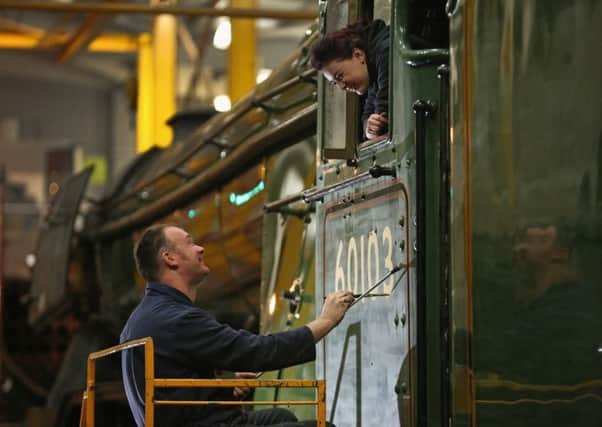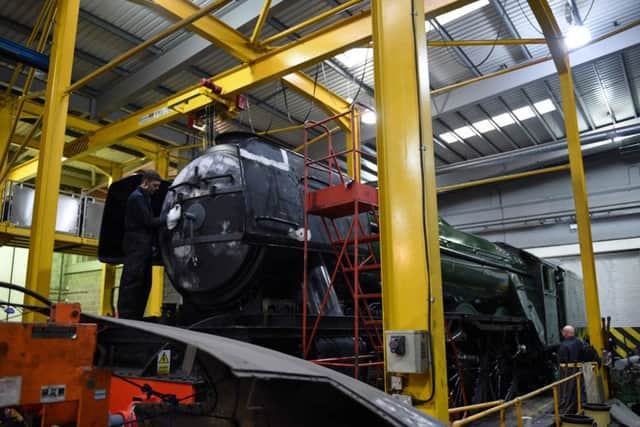Finishing touches applied to Flying Scotsman restoration


The express has had its temporary black paint removed and the traditional early 1960s British Rail green has been painstakingly applied by brush.
Closely watched by enthusiasts and the media at the National Railway Museum in York, signwriter Michael O’Connor carefully painted the number 60103 on the cab by hand.
Advertisement
Hide AdAdvertisement
Hide AdExcitement is growing ahead of Flying Scotsman’s inaugural trip on the East Coast Mainline on February 25. In its first official outing bearing its nameplates after a 10-year, £4.2 million restoration project, the 1923 engine will travel from King’s Cross to York.


Museum head curator Andrew McLean agreed there had been some controversy over the exact shade of green, with some enthusiasts hoping to see the engine painted Apple Green - its original London and North Eastern Railway livery.
He said Flying Scotsman had undergone some alterations in the 1950s and 1960s so the accurate colour was the BR green it sported then.
He said: “To finally get Flying Scotsman fully restored, looking exactly as she should, in steam and alive again will be a really special moment for many people.”


Mr O’Connor said he was honoured to work on the engine: “This is definitely one to tell the grandkids and great-grandkids.
“Flying Scotsman is the pinnacle of steam engines.”
Ian Hewitt of Heritage Painting said his team of five had completed the job in 10 days, stripping off the black paint, then applying 20 litres of undercoat, 30 litres of gloss and 20 litres of varnish, all painted by brush.
He said: “It’s the pinnacle of our careers, and to now see it coming together on the world’s most famous locomotive... it doesn’t get any bigger for us.
“She’s absolutely tip-top, probably the best condition she has been in for a long time.”
